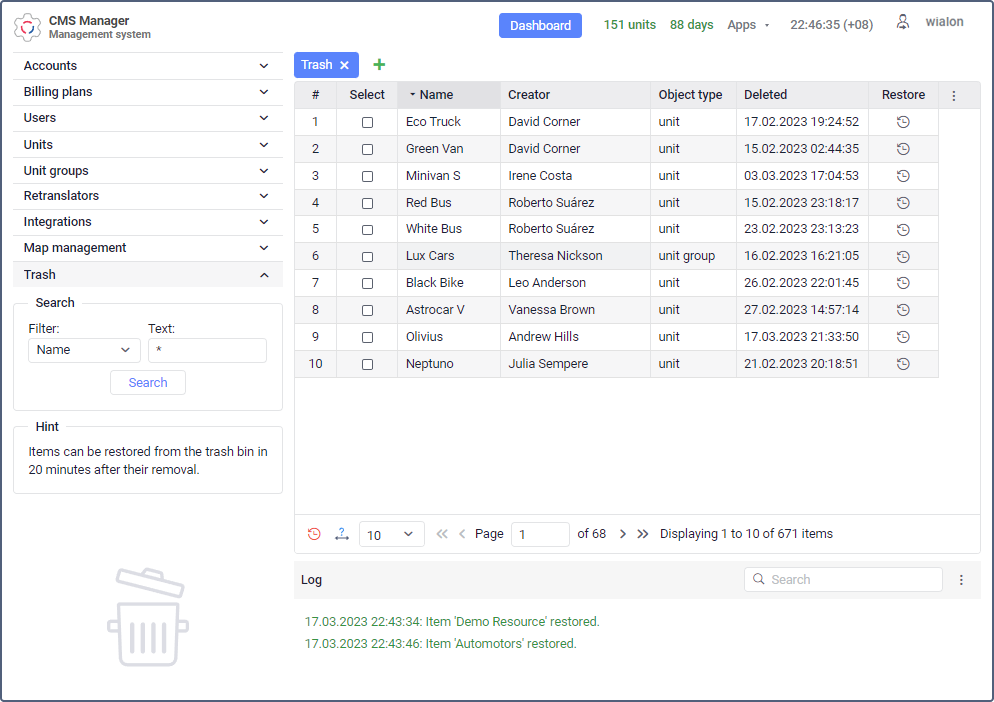Trash
The Trash section is available only to the user of the top account.
Here you can see the deleted macro-objects of the system: resources, units, unit groups, users, routes, retranslators. They are stored in the trash for 30 days after deletion and, if necessary, you can restore them during this time.

Table of deleted objects
The table of the deleted objects contains the following columns:
| Column | Description |
# | The row number. |
Select | The selection of an object in the table. You can select several objects to restore them simultaneously. See more below. |
Name | The name of the deleted object. |
Creator | The user indicated as the object creator. If this user has been deleted, a dash is displayed. |
Object type | The type of the deleted macro-object: resource, unit, unit group, user, route, retranslator. |
Deleted | The date and time of deleting the object. |
Restore | The icon for restoring the object. |
If necessary, you can sort the data by any column, hide the unnecessary columns, etc. See more about working with tables here.
To quickly find the required object in the trash, use the search.
Restoring objects
To restore an object, click on the icon  in its row. To restore several objects at once, mark them in the Select column and click on the icon
in its row. To restore several objects at once, mark them in the Select column and click on the icon  at the bottom of the table.
at the bottom of the table.
You can restore objects no earlier than 20 minutes after they are deleted. If less than 20 minutes have passed, the objects are displayed in the table with the Restore icon disabled.
The restored objects are automatically removed from the list and added to the top account. Units can be transferred to the subordinate accounts. Other types of objects can’t be transferred, so you should create them in the subordinate accounts again.
The object creator and the users higher in the hierarchy get all access rights to the restored object.
When restoring units, take into account the following particularities:
- a unit will no longer belong to a group after restoring, if the group has been changed in any way;
- the unit messages are restored together with the unit.